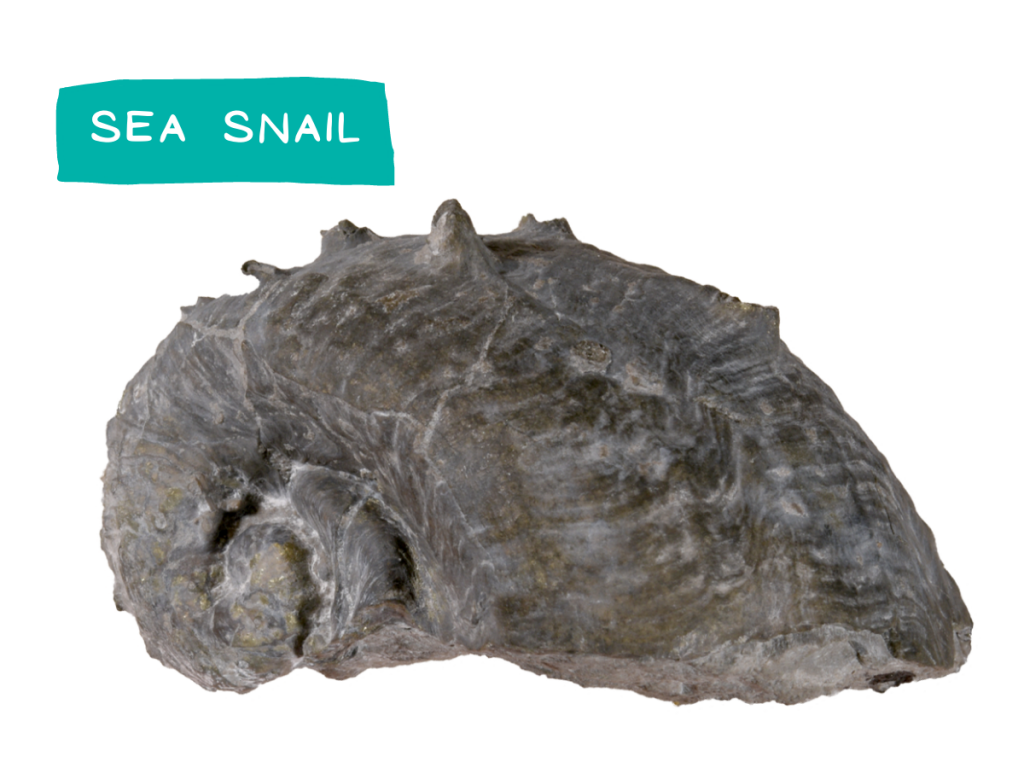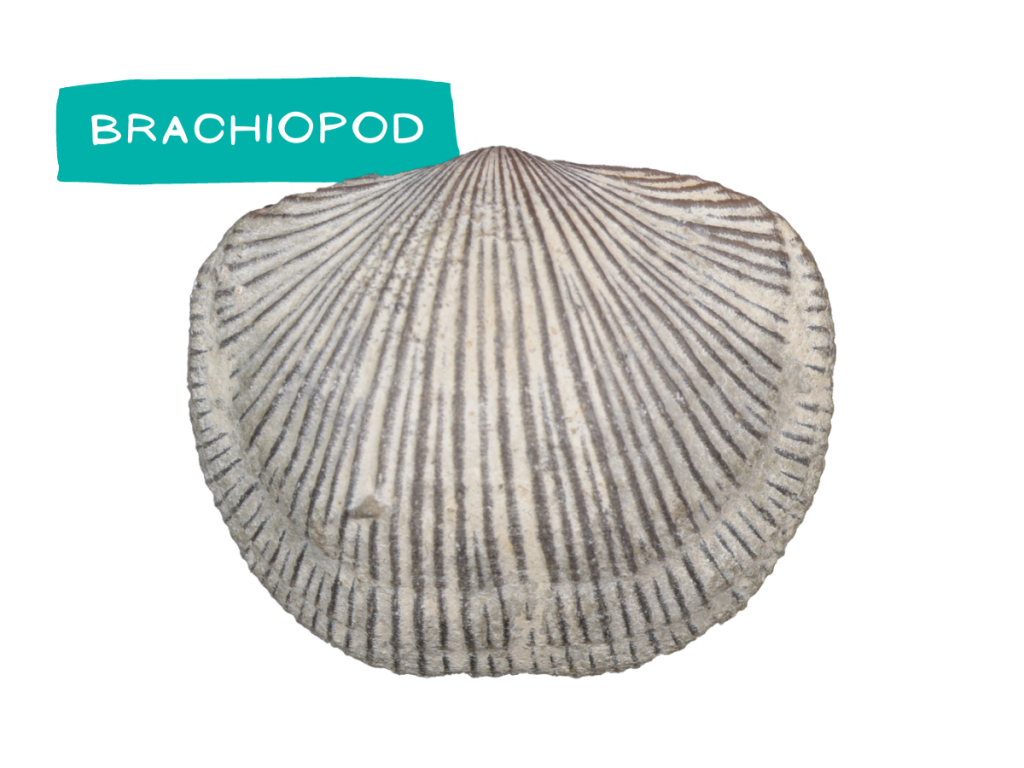
Shells
Shells are a common fossil found in Michigan. The animals that make the shells can be quite different – ranging from snails to squids to brachiopods. The shells are a variety of shapes and sizes.
Two very common types of shells found are those of sea snails and brachiopods. Choose the icon which looks closest to the fossil you have found. We will provide some common identification tips as well as links to our massive 3D model database for you to explore.
If you have found what might be a fossil shell in Michigan and would like help identifying, please contact us by email and send along several photos of your find with a ruler or coin (for a scale reference).
Sea Snail
In Michigan, sea snails can be found in rocks ranging from the Ordovician to Mississippian (485 – 323 million years ago).
Sea snails are members of the class Gastropoda, which includes land snails and slugs. They have a protective shell (which you’ll find as a fossil) and move using a large, flat foot. Snails come in all shapes and sizes, and in Michigan, many fossil snails are internal casts or replicas made from mud that infilled the shell.
Identification Tips
1. Snails take on a variety of shapes, but most have an apex, or a tip top where the spiral of the shell ends
2. All snails have an opening called an aperature where their body extends from the shell
3. Snails have growth lines, sometimes they are faint, othertimes they are more pronounced
See a 3D Model of a related sea snail
Doesn’t look exactly like what you found? Explore more 3D models of related animals (Class Gastropoda, Phylum Mollusca).

Brachiopods
In Michigan, brachiopods can be found in rocks ranging from the Ordovician to Mississippian (485 – 323 million years ago).
Brachiopod fossils are commonly found in Paleozoic rocks, as they were especially abundant then, but brachiopods can sometimes be found in today’s oceans from tropical waters to the freezing Arctic and Antarctic waters. Brachiopod fossils make up many Paleozoic rocks.
Identification Tips
1. Two valves (shells) with symmetry down the center like a butterfly
2. Ornamentation on the shells as growth lines and ribbing
3. Fold and sulcus giving one valve a raised appearance and the other more concave
See a 3D Model of the brachiopod
Doesn’t look exactly like what you found? Explore more 3D models of related animals (Phylum Brachiopoda).





